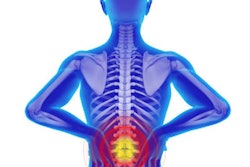
Two of the most frequently delivered low-value medical services within the U.S. Veterans Health Administration (VA) system are back imaging for patients with nonspecific low back pain and preoperative chest x-rays, a new study finds. In addition, imaging for low back pain was one of the costliest low-value services.
The cross-sectional study assessed a national population of veterans enrolled in the VA system to assess the prevalence of low-value care, defined as a health service whose harms or costs outweigh its benefits. There's actually quite a bit, according to Dr. Thomas Radomski, from the Center for Health Equity Research and Promotion at the VA Pittsburgh Healthcare System in Pittsburgh (JAMA Internal Medicine, July 5, 2022).
"Many of the common factors believed to incentivize the delivery of low-value care in Medicare, including operating within a fee-for-service delivery model and fear of malpractice litigation, are not present within the VA, suggesting that the drivers of low-value care are diverse and less tied to financial incentives than is commonly perceived," the authors wrote.
Low-value care is a major driver of wasteful spending and causes negative physical, psychological, and financial harm for patients. Estimates suggest low-value services are common and costly within Medicare and private insurance plans, but the use and cost of low-value services delivered by VA facilities or by VA Community Care (VACC) programs have not been comprehensively quantified. Radomski and colleagues sought to change that.
In this study of 5.2 million VA-enrolled veterans, the research team used VA Corporate Data Warehouse data on enrollment, sociodemographic characteristics, comorbidities, and healthcare services delivered by VA facilities or paid for by the VA through VACC programs for fiscal year 2018.
They used a metric for low-value service to quantify 29 potentially low-value tests and procedures delivered in VA facilities and by VACC programs. The metric identified a range of potential low-value service use for each test or procedure that accounted for variations in related guidelines.
The tests and procedures spanned six domains: cancer screening, diagnostic/preventive testing, preoperative testing, imaging, cardiovascular testing and procedures, and other procedures. Using the metric, the researchers identified 19.6 low-value services per 100 veterans that involved 13.6% of veterans at a total cost of $205.8 million.
While prostate-specific antigen (PSA) blood testing for men older than 75 was the top service identified as being low value, several imaging-based services landed on the list of most-frequent procedures.
| Selected low-value medical services in VA healthcare system | ||
| Type of service | Rate of low-value tests per 100 veterans | Cost to VA system |
| PSA testing for men older than 75 | 5.9 | $10.4 million |
| Back imaging for patients with nonspecific low back pain | 2.7 | $118.6 million |
| Preoperative chest radiography | 2.3 | $27.6 million |
| Screening with imaging for carotid artery disease in asymptomatic adults | 1.7 | $24.3 million |
| Parathyroid hormone measurement for patients with stages 1-3 chronic kidney disease | 1.6 | $6.2 million |
| Spinal injection for low back pain | 1.4 | $43.9 million |
| Head imaging for uncomplicated headache | 1.0 | $84.0 million |
The researchers noted that while the study shows that low-value care is "prevalent" in the VA healthcare system, it actually occurs at lower rates than in other systems. For example, the rate of low-value care in the VA is two-thirds that of the Medicare system, the authors noted.
"Many of the common factors believed to incentivize the delivery of low value care in Medicare, including operating within a fee-for-service delivery model and fear of malpractice litigation, are not present within the VA, suggesting that the drivers of low-value care are diverse and less tied to financial incentives than is commonly perceived," they concluded.



















